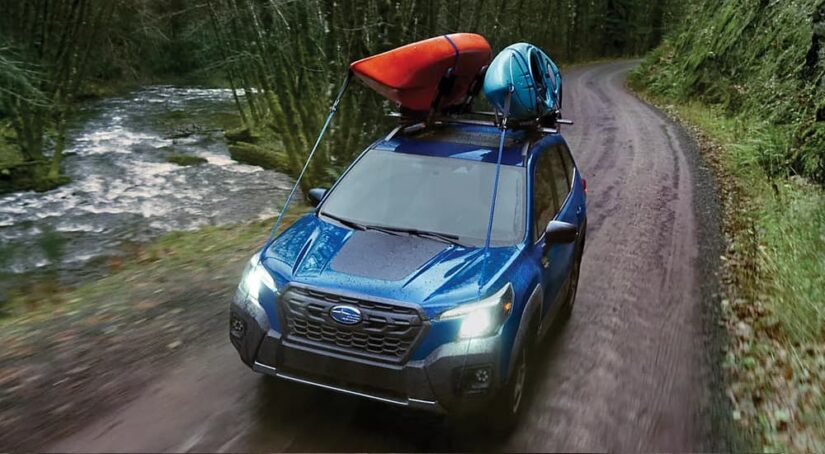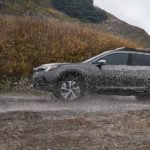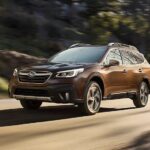Subaru has a reputation for making SUVs that are popular among explorers, adventurers, and active individuals. Visit a national park, a campsite, or a recreational area, and you’re bound to see a handful of Subarus parked there. Subaru makes SUVs that are loaded with features just right for the driver who never quite knows what road they’ll travel that day or where they’ll set up camp that night. Subaru is also known for incredibly safe vehicles. In fact, the brand won five Top Safety Pick awards from the Insurance Institute for Highway Safety for its 2023 lineup. When you want to venture farther with the confidence of knowing you’re in a great vehicle, you can’t go wrong with a Subaru.
For many outdoor enthusiasts and road trip warriors, it comes down to the Outback versus the Forester. Subaru makes a limited but well-engineered lineup and has just one midsize SUV and one compact SUV for 2023 (not counting the all-electric Solterra). If you’ve been looking for a Subaru Forester for sale or a Subaru Outback for sale, it’s a good idea to first understand the fundamental differences between the two models. They are both rugged, fuel-efficient, and spacious vehicles with loads of terrific standard infotainment and driver-assist features. However, each one is just right for its respective driver, so here’s a look at how the two compare.
Why Do People Love Both of These Vehicles?
Before diving into the differences, let’s examine what these two vehicles have in common. They do share some major similarities beyond the Subaru badge, which is why so many shoppers find themselves comparing the two.
Both the Outback and the Forester have Subaru’s beloved Symmetrical All-Wheel Drive system standard across all their trims. This gives drivers the confidence to tackle a range of terrains and weather conditions, knowing they’ll have the traction they need when the ground beneath them becomes less than predictable.
Each vehicle also gets the off-road-ready Wilderness trim, which earns its name with upgrades like a heftier suspension, higher ground clearance, enhanced approach and departure angles, and skid plates where it counts. Off-road enthusiasts who are Subaru loyalists love this trim.
Overall, Subaru has created dynamic trim options for each model to appeal to different drivers. Further, the starting trim for both the Outback and the Forester sits comfortably below $30,000 for the 2024 model year, making these models deliver a ton of value for your dollar. However, the top-end trims get substantially pricier for the Outback.
Finally, no matter which vehicle you choose, you’ll get Subaru’s award-winning EyeSight suite of driver-assist features. This will include Advanced Adaptive Cruise Control with Lane Centering, a Pre-Collision Braking System, Pre-Collision Throttle Management, and Lane Departure and Sway Warning. You will also have standard LED Steering Responsive Headlights and High Beam Assist.
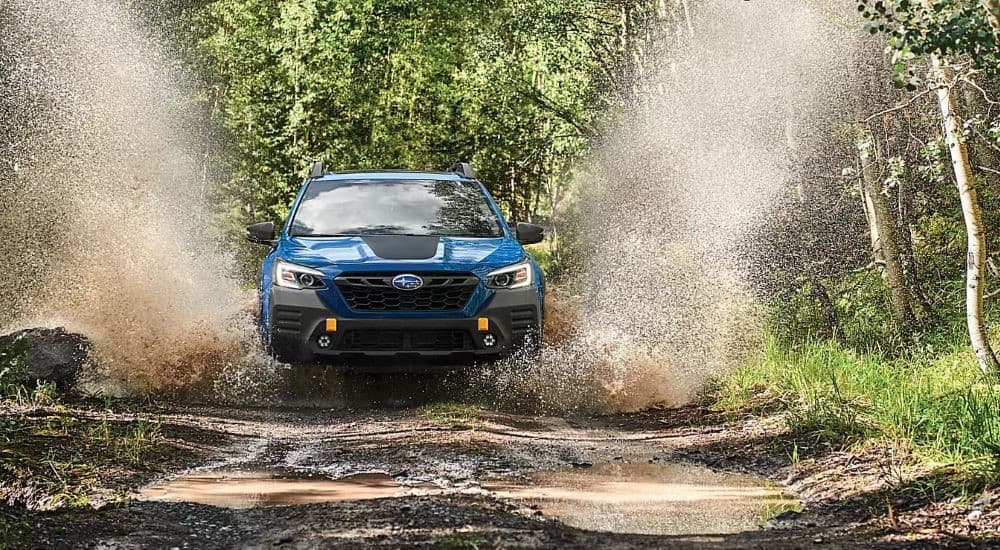
Size Differences
The Outback is a midsize SUV, and the Forester is a compact SUV, so naturally, the Outback is larger overall. The Outback is longer and wider than the Forester. Some drivers like the stabilizing feeling of a long and wide frame. However, some like the more spry behind-the-wheel feel of the Forester. The extended length of the Outback does give it a larger trunk area than the Forester, which is worth noting if you need to throw a dirt bike or cooler in there.
What might surprise some drivers is that the Forester is roomier inside despite its overall smaller dimensions. It offers a bit more legroom and headroom for front and rear passengers and even has more overall passenger volume than the Outback. What the Forester lacks in overall dimensions, it makes up for with a roomy cabin.
Both of these models have impressive standard ground clearance at 8.7 inches. That is considered amongst most off-road enthusiasts and adventurers as excellent ground clearance. This starting measurement is more than enough for casual overlanders and will help you navigate bumpy, rocky terrain.
The Wilderness trim on both models is where you’ll find even more ground clearance––it goes up to 9.5 inches for the Outback Wilderness and 9.2 inches for the Forester Wilderness. With that type of ground clearance, you’re more than ready to leave paved roads and travel over small boulders, branches, streams, and more. Plus, the Wilderness trims come with other adventurous features like skid plates and all-terrain tires.
Trim Differences
You will notice a huge discrepancy in the number of trims between each model. The 2024 Outback has a total of nine trims, while the 2024 Forester has six. There is a bit of overlap between the two, but the Outback generally has some more souped-up and luxury trims than the Forester.
For example, each model has the Limited and Touring trims, but the Outback adds the Limited XT and the Touring XT. When you see “XT” in the name, that means the trim has a more powerful turbocharged engine. The Outback and Forester both come standard with a 2.5L engine producing 182 hp, but the Outback is available with a 2.4L turbocharged engine with 260 hp. This engine gives the Outback a maximum towing capacity of 3,500 lbs, which is 500 lbs more than the Forester can tow.
The Outback also has the Onyx Edition and Onyx Edition XT, two trims that provide special luxury features and exterior design details like water-repellent upholstery, a power driver’s seat, and 18-inch aluminum-alloy wheels with a black finish. It’s features like these that give it a very distinct look and feel. The Forester does not have the Onyx Edition option.
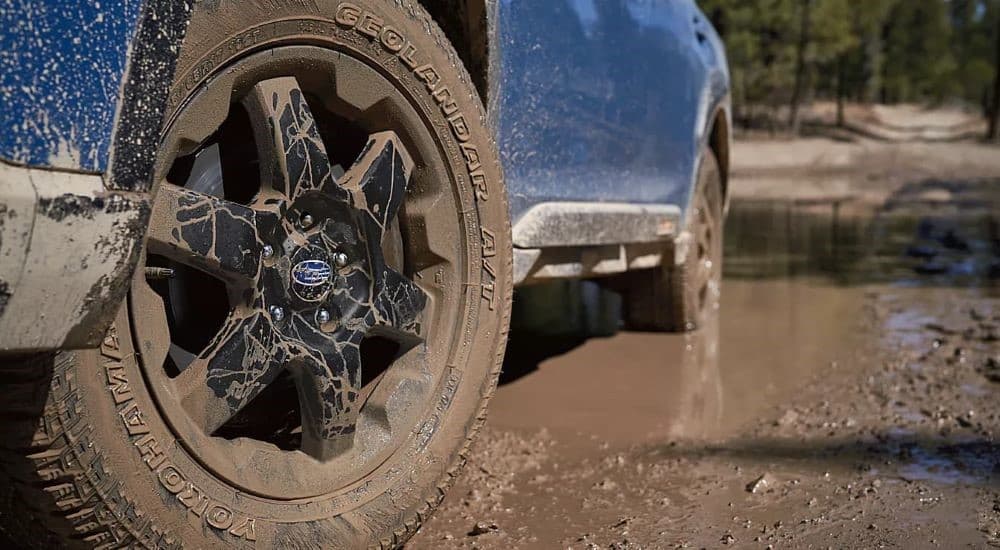
Which Subaru SUV Is Right for You?
It can be difficult at first glance to know which one of these SUVs is right for you. They both have an athletic stance, Symmetrical All-Wheel Drive, and great driver-assist features. Drivers who want to find themselves out in nature and explore new terrain have long loved both of these SUVs. Knowing which is right for you comes down to some subtle differences.
The Outback definitely offers more trims. However, you have to ask yourself if you care about the additional options. If you want more towing ability and a more powerful engine, the trims with that “XT” on the end are the way to go, and they are only available in the Outback. Likewise, if you want something that feels and looks more luxurious than rugged, the Onyx Edition can be a nice choice, which is also only available on the Outback.
Should affordability, convenience, and comfort be your priorities, the Forester is definitely worth a look. It has a surprisingly cavernous interior for its compact dimensions and will certainly keep backseat passengers content. Plus, its dimensions make it really easy to handle and are part of the reason it has a mild fuel efficiency advantage over the Outback.
The Outback does have the Forester beat in the cargo department, so if you need to pack more gear or require an SUV that’s also ready for running errands around town, you might want to go with the Outback. The great news is that both of these vehicles are incredibly safe and well-priced––and for many drivers, those are the two features that count the most.
